Best portable jump starter in 2021
Having a reliable portable car battery charger is important for bad weather, vehicles with older batteries, and unforeseen circumstances that might require a jump start.
If you've ever been unlucky enough to find that your vehicle won't start on a chilly morning, you know how important it is to be able to get a quick jump. Luckily, there is a solution to this stressful situation -- owning a portable jump starter offers a type of insurance against having to wait for a neighbor or stranger to help.
Car battery chargers and jump starters are dense little storage bins for electrical energy and many come with useful built-in accessories. They'll recharge with standard extension cords, wall-plug adapters, cigarette lighter-style 12-volt male adapters or USB ports in running vehicles. Most portable battery jump starter options offer some combination of the four recharge options.
These portable batteries do what they were originally intended to do: boost the dead battery to make a car start. All battery boosters come with jumper clamps that attach to the auto battery terminals and nearly all include reverse polarity protection. Some of these vehicle battery jump starters come with easily installed, semi-permanent attachments that allow you to quickly connect them to your car's starting electrics without the booster clamps. Most have some sort of flash or area light and at least one USB port to charge electronics like phones and tablets. Those features are only the start when it comes to jump starter pack options.
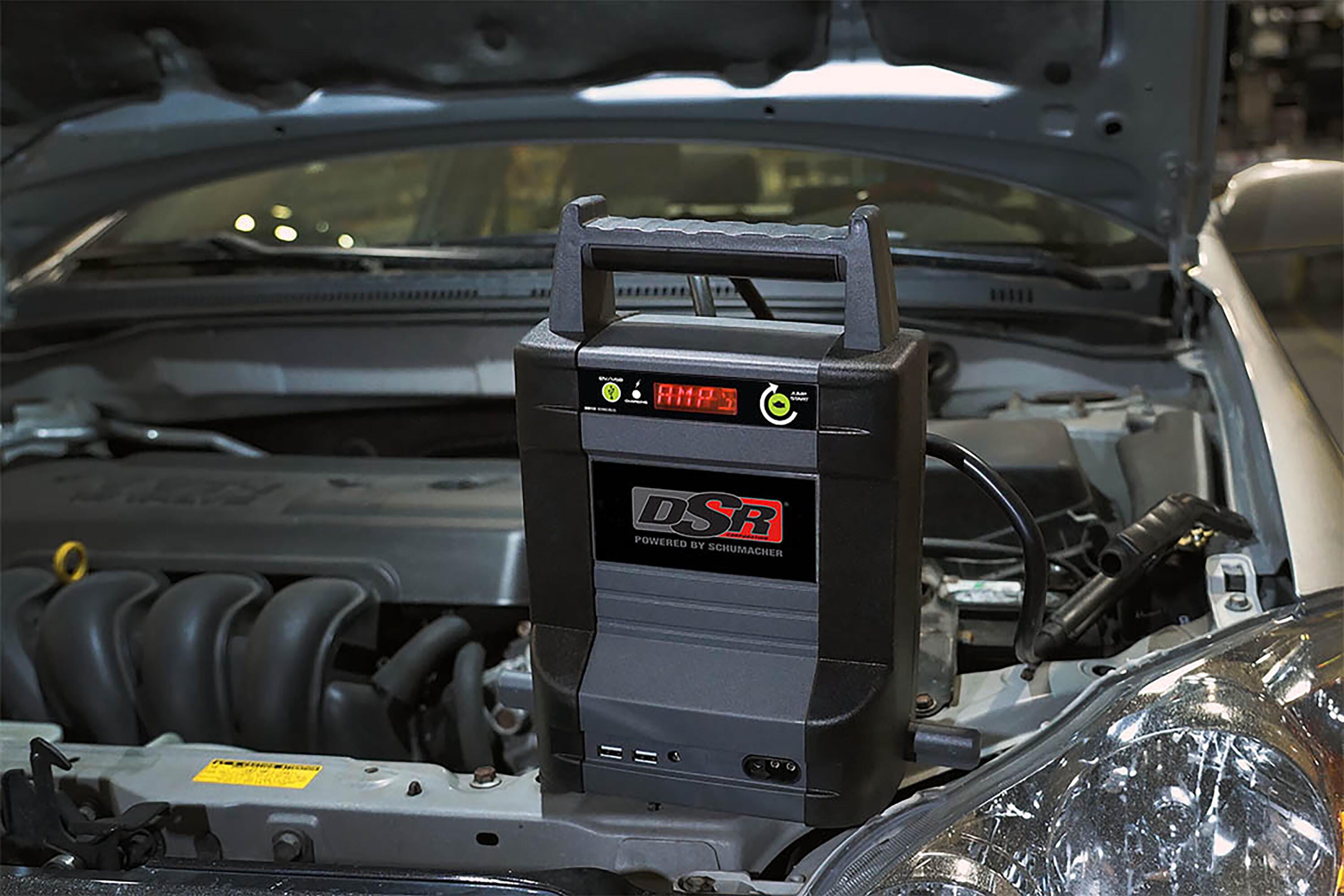 A portable jump starter battery is a good insurance policy to have in your car.
A portable jump starter battery is a good insurance policy to have in your car.What else can it do? On a single charge, a portable car battery pack or charger can power your high-draw laptop computer several times longer than its own built-in battery. Want a battery booster with a built-in air compressor so you can fill up your raft at the lake or a low tire before you head home from the airport? No problem. Would you also like a jump starter or battery charger with an AC inverter so you can plug in a radio, a lamp or another small appliance during a power failure or at a campsite? Done: These power pack devices are basically the ultimate power bank. Do you need to charge your phone and another USB device (your kid's Nintendo Switch, for example) at the same time? Many of these have a dual USB port to accommodate your charging needs.
To be sure, these features add bulk and mass to a jumper pack (these devices won't fit in your glove box), but their value in capability, convenience and preparation can more than surpass the extra weight. After all, you want to have enough power to prepare for pretty much any emergency on the road.
Criteria for choosing the best portable car battery charger
We've assembled a list of our favorite portable car batteries, from basic jump starters to personal power units with battery capacity for camping trips or power outages. We've based our best portable jump starter recommendations on testing labs such as Consumer Reports, user ratings at popular shopping sites and hands-on experience.
Before you dig in, consider the following to determine which battery jump pack or portable charger might work best for you.
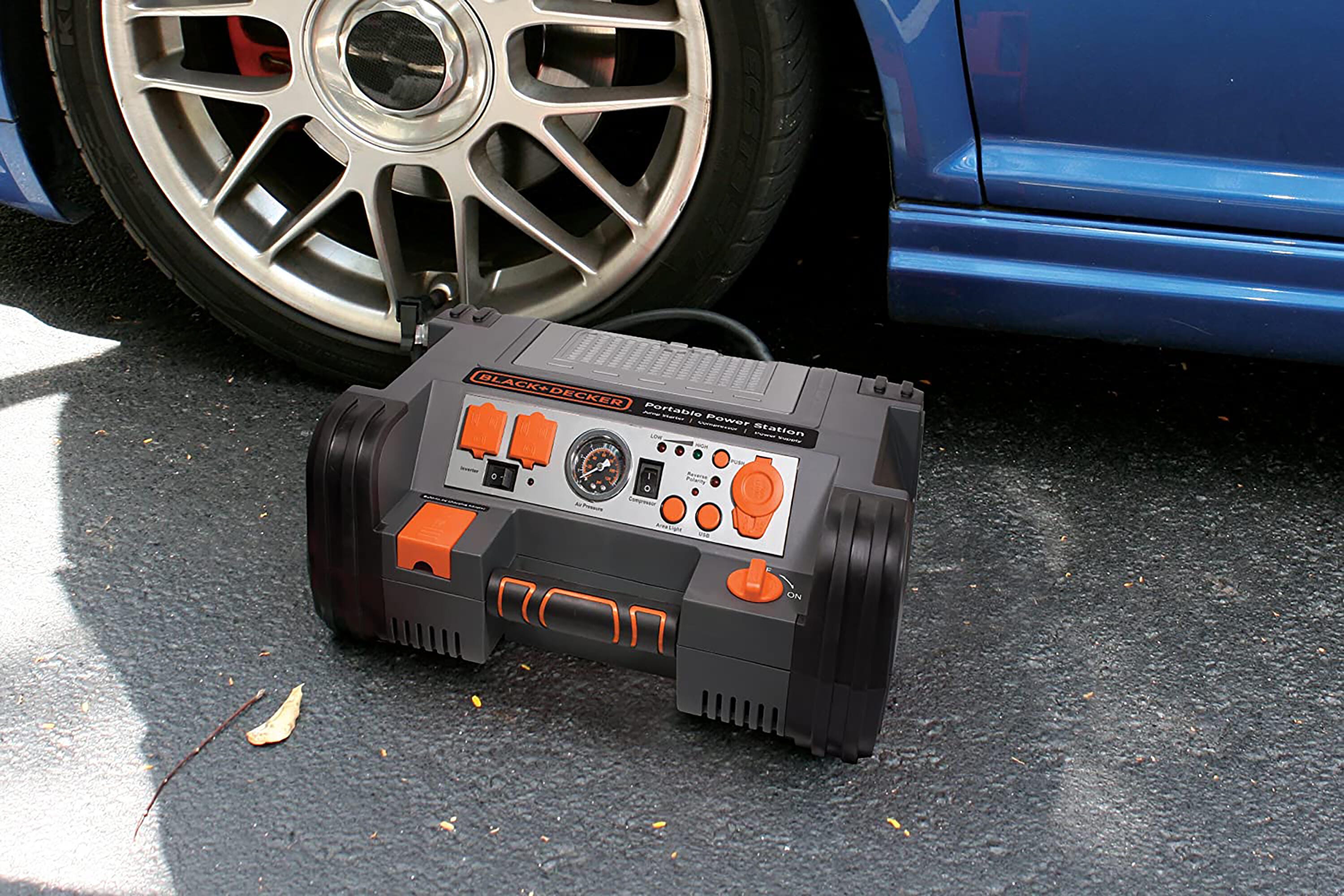 Some portable jump start batteries have other useful features such as air compressors, charge ports for phones, and lights.
Some portable jump start batteries have other useful features such as air compressors, charge ports for phones, and lights.Five things to know before buying a portable car battery
1. Its primary purpose: What are you using it for? Most car battery jump starters and battery chargers offer some flexibility, but some portable car jump starter options are more limited in what you can do with them. If you're not worried about running a small television when the power fails, you probably shouldn't worry about getting a portable car battery with a built-in AC inverter, so make sure the battery pack features have enough power and are right for your needs.
2. Starting amps: This is particularly important if you plan to use your portable battery primarily for its original purpose: jump starting engines. A big V8 engine -- particularly a diesel engine -- could require upwards of 500 ampere current to turnover on a cold day. If that's what you need to do, you'll have a harder time doing it with a battery jump starter intended for a four-cylinder. Most manufacturers rate their portable car starters and motorcycle jump starter batteries for types of engines, so read the fine print for your jump starter battery. Look for starting or cranking amps, and don't worry much about the peak amp figures.
3. Total storage capacity: Usually measured in amp hours or milliamp hours (1,000 mAh equals 1 Ah), this matters more if you plan to use your portable jump starter battery and portable car battery charger as a backup or mobile power source. A higher number means more electrical storage capacity. Typical portable batteries are rated from five to 22 amp hours.
4. Chemistry: Portable car batteries still run the gamut, from sealed lead acid battery options to absorbent glass mat to lithium jump battery starter and, recently, ultracapacitors. The chemistry matters less for ultimate utility and more for weight, size and, to a lesser extent, cost. If you want something you can keep in your glove box, it's probably not going to be a sealed lead-acid battery booster.
5. Features: All of the possible options are useful, but again, the issue is size and weight. Add all of the features in one unit and the jump starter gets much bulkier, with weight exceeding 30 pounds. For some purposes -- camping trips for example -- that may not matter much. On the other hand, you may not want to be carrying one of the bigger portable car batteries around in your Mazda Miata. Some manufacturers, including the highly rated Antigravity brand, are starting to offer separate accessories like a small, powerful air compressor that work with their paperback-size lithium-polymer jump starter batteries, but this approach tends to add to the cost.
Here, in alphabetical order, are our highly rated favorites for best portable jump starter options. We'll be updating this list periodically as we review new options. If you think you want a portable car battery jump starter and battery charger, check the pro tips on safety and proper care that follow.
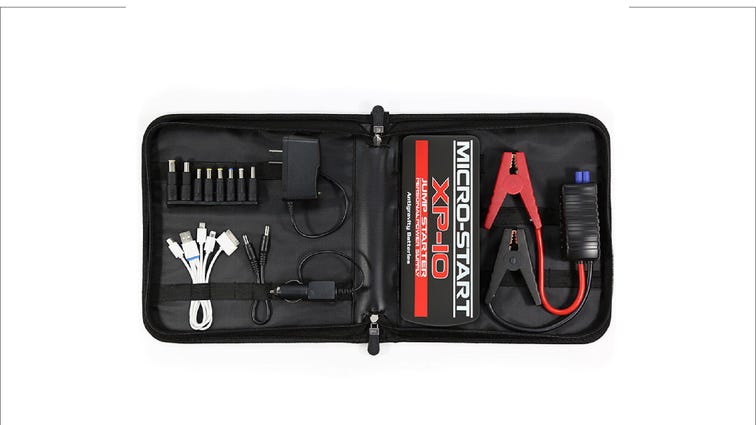
Antigravity was among the very first manufacturers to offer a lithium ion jump starter back in 2012, and its XP-10 Micro-Start was rated best of all in Consumer Reports' most recent test of lithium ion jump starter portables -- cited in particular for its ability to deliver repeated car jump jolts after competitors had been drained. This car jump starter is UL listed, with a multi-mode LED flashlight and multiple USB charging options for electronics. Antigravity says it will jump V8s up to 7.3-liters for gas engine vehicles (such as a car, truck or motorcycle battery). This device is a bit pricey compared to lesser portable jump competitors, but quality counts.

This is the latest evolution of the top-rated XP-10 car jump starter. It has all the same features, including the LED flashlight with a strobe and multiple charging options for electronic devices, but the heavy duty car battery jump starter can deliver an extra 50 amps of peak starting jolt. It also comes with all copper, heavy-duty commercial grade battery jumper cable clamps.
The best all-in-one portable jump starter battery
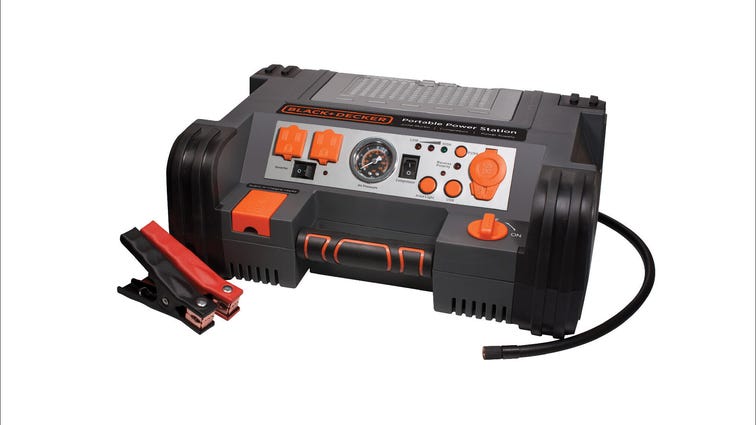
This is the Swiss Army knife of portable car batteries and chargers. It's UL listed, rated well across shopping sites and priced right if you look hard. The Black & Decker Power Station features multiple recharge options, a work light, a 120-psi air compressor, USB taps and a 500-watt AC inverter with two plugs to run small appliances. That all makes it truly handy, with a solid 17 amp hours of stored power. It's a heavy car battery at 20 pounds, but it's also smartly packaged with a convenient grab handle. The Power Station does it all.
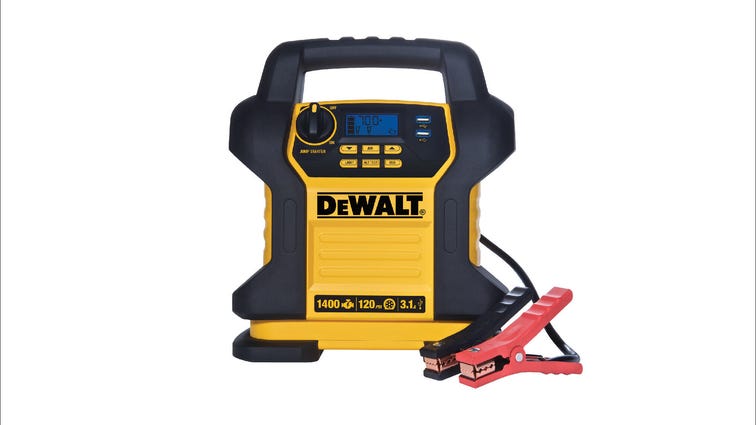
The DeWalt DXEJ14 makes our best portable jump starter list with a 4.4 stars rating across 450 buyer reviews at Home Depot's shopping site. This car jump starter has an expansive 21 amp hour battery, an onboard compressor and a patented feature that can tell you if your vehicle's alternator is up to snuff. There's a light and USB ports, but the DeWalt's biggest draw is the power in its initial jump-start jolt. At 700 cranking amps, it's rated among the most powerful portables on the market.
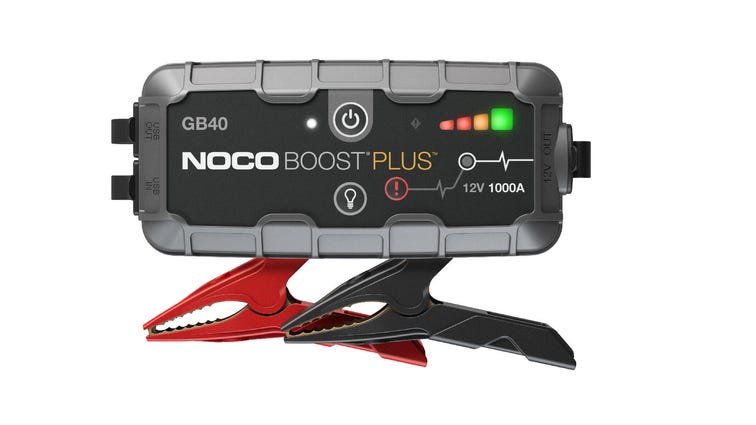
The GB40 portable jump looks like it's all business. Consumer Reports liked NOCO for its jump starting, but didn't like its low storage capacity for powering other devices. This jump starter device has a flashlight and one five-volt USB port, but it can be pricey for its capacity and relative lack of features.
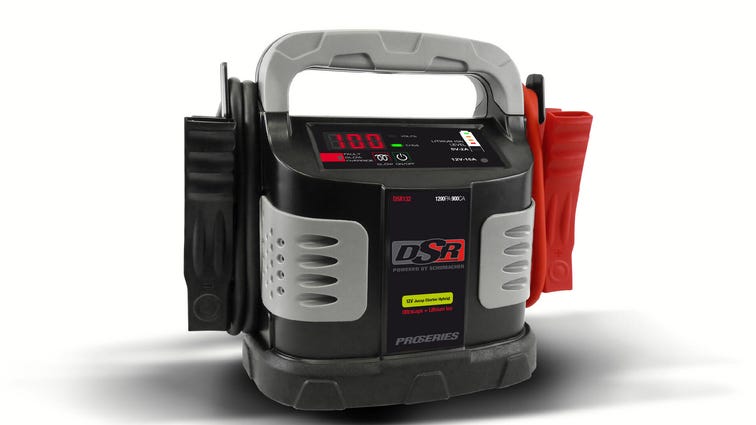
This one violates the spirit of this list because it's only a jump starter -- no LED flashlight, USB charge port or anything else. It made it because it's really cool, as it applies the next wave in electrical storage technology: ultracapacitors.
Once referred to as condensers, capacitors store energy electrostatically in an electric field. Compared to chemical-based batteries, they store relatively little energy, but the advantages are significant. Modern ultracapacitors can absorb energy quickly and dump it in big jolts, as opposed to something more like a trickle with a battery. And they can operate effectively in a broader temperature range than most batteries. That makes them perfect for jumping a weak car battery.
The Schumacher Ultracapacitor Hybrid Jump Starter delivers 900 amps of cranking power, which should fire just about anything up to a semi-truck. It has a small, replaceable lithium ion battery to prime the ultracapacitors, but if the onboard battery is drained it will still prep the ultracapacitors in roughly two minutes on a 12-volt charge from a vehicle (maybe even the weakened battery in the vehicle that needs a jump). In other words, it's never really dead. It's intended primarily for commercial purposes and it's not cheap. But if you want the coolest, most fail-proof portable jump starter out there, this might be it.
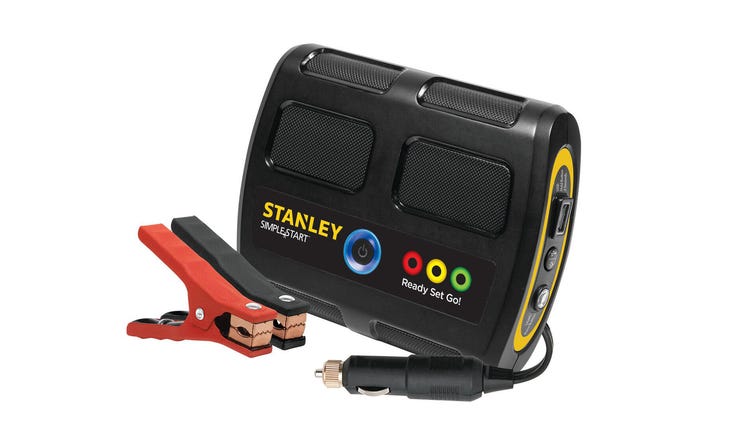
The Stanley Simple Start is intended for folks who don't like getting their hands dirty. In addition to standard battery jump start clamps, this lithium ion portable battery comes with a 12-volt male socket for car lighters or accessory plugs. Simply plug the fitting in and the Simple Start charges the on-board battery, typically in one to five minutes. A green LED tells you when the car is ready to start. Stanley says it works for V8 engines up to 5.0 liters and the Simple Start has an LED work light and five-volt charging port for USB devices. Its 2 Ah battery is as small as they get, but this mini jump starter keeps enough juice to recharge a couple cell phones or a tablet.
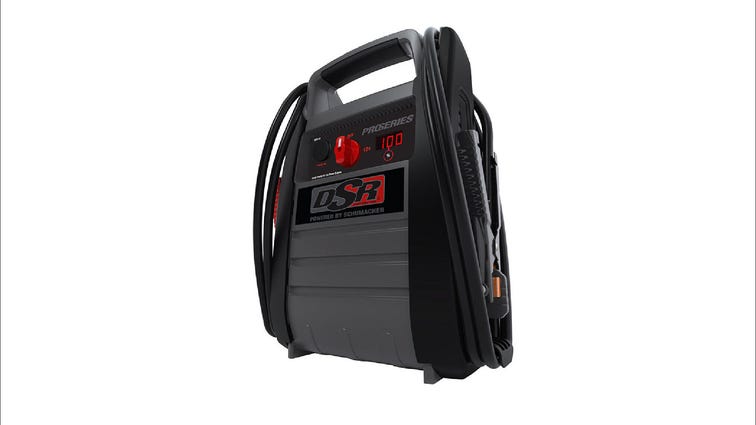
From a trusted name in automotive electronics, the Schumacher ProSeries 2250 Jump Starter gets 100% satisfaction from buyers on several shopping sites. This car jump starter has a vibration-resistant absorbent glass mat battery, a 400-watt AC inverter with two plugs and enough cranking amps to start just about any light-to medium-duty vehicle with a dead battery out there. Best of all, it comes with one of the largest capacity batteries you'll find. Schumacher says it can feed a 200-watt AC draw for 55 minutes, and 100 watts for 90 minutes.
Pro tips
Portable car batteries and chargers aren't significantly regulated and as Consumer Reports has noted, some manufacturers' performance claims are dubious. Always read the fine print. For safety, look for batteries that are certified for compliance with Edison Testing Labs/Intertec or UL standards.
Always think about temperature. Manufacturers recommend not storing batteries in high-temp environments. If you want to keep a battery in your car, keep it out of direct sunlight in the glove box -- or better -- the trunk. In the summer months, it's better to grab it when you start your trip and take it out of the car when you get home.
Then there's the other extreme. Anyone vaguely familiar with batteries knows that they're not terribly fond of extreme cold. Consumer reports found that when both the jump starter and the weak car battery were cooled to zero degrees, the performance of even the best portable jump starter options degraded significantly. If it's really cold out, warm the portable battery indoors or inside a car first and keep it as warm as possible before you use it to jump a vehicle.
Chemistry does matter when it comes to the care and feeding of a car jumper. Conventional sealed lead-acid cells are heavier and discharge more rapidly than lithium ion batteries when they sit idle, but they can also be less sensitive to temperature extremes and to significant physical impacts. Either way, the care strategy with sealed lead-acid or absorbent glass mat is straightforward. Keep the battery charge as close to full as possible as much of the time as possible.
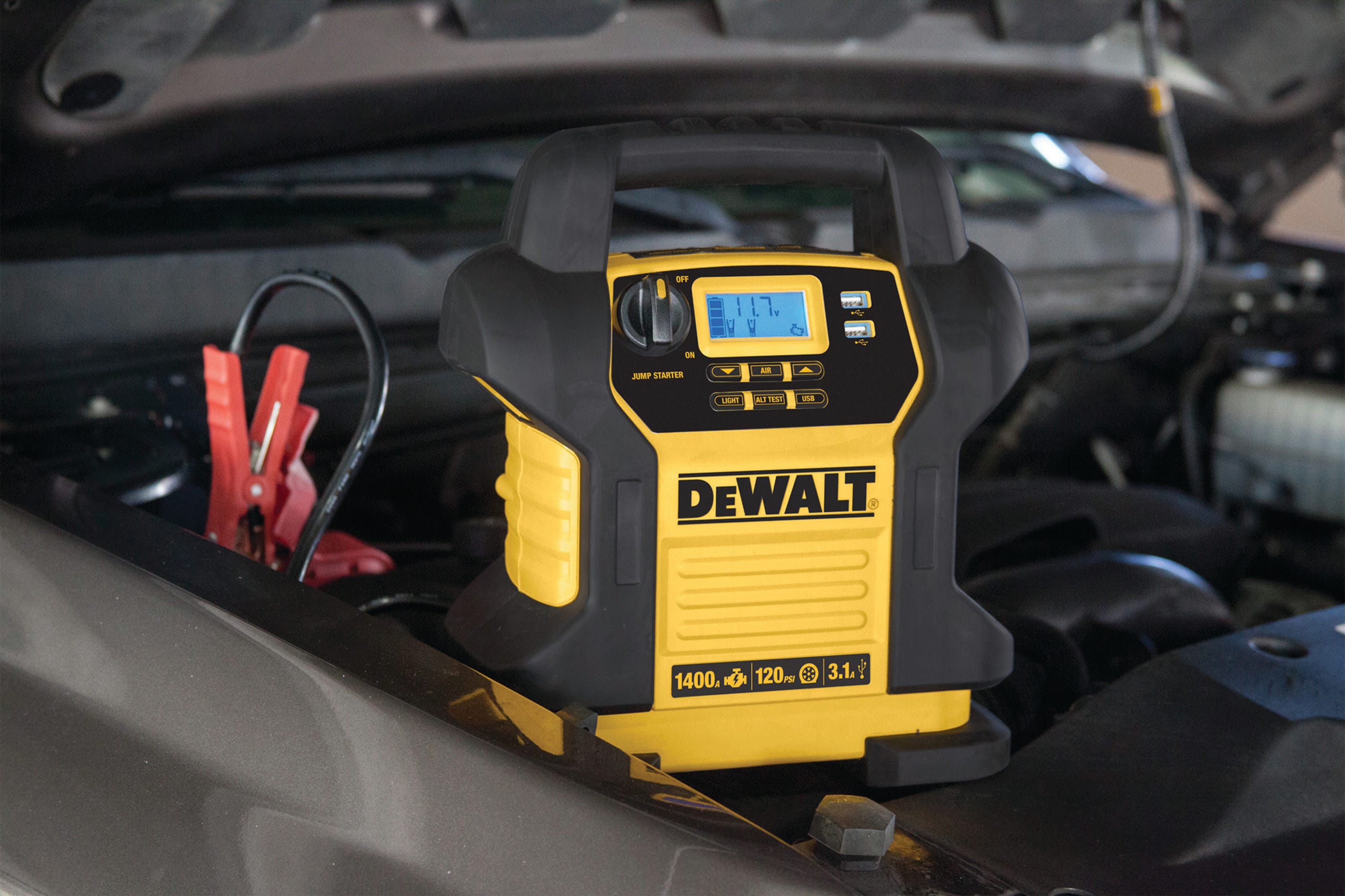 The chemistry of your portable jumper's battery matters when it comes to caring for it.
The chemistry of your portable jumper's battery matters when it comes to caring for it."When you get it, charge it fully," says Dan Portwood, senior product manager at Baccus Global, a manufacturer of multiple jump-starter brands. "After you use it, for a jump or something else, recharge it fully. If it sits idle for a month or two, recharge it fully. That limits the amount of sulfur in the cells and ensures both the maximum capacity and the longest life."
Whatever the chemistry, it's virtually impossible to overcharge a jump-start battery. That means you can plug it in and forget it for days at a time. Yet Portwood doesn't recommend charging all the time. That keeps the charge block consistently warm (whether the block is external or built into the battery case), and can shorten its useful life.
The lithium-polymer cells in more compact car jump starters and chargers hold more energy for the relative size. They also hold a charge longer than sealed lead acid when they're idle, but they can be a bit more finicky. To maximize performance over the long haul and ensure maximum life, a more active approach might be in order.
"If you have a reputable brand with good cell structure, you have a good foundation," said Chad Estevez, a product support specialist at Antigravity. "Try not to store it in temperature extremes, and don't leave it sitting for a year at a time. Treat it like a cell phone and exercise the cells. Use it every couple of months. Drain it a bit in some fashion, and then put it on the charger."
Comments
Post a Comment